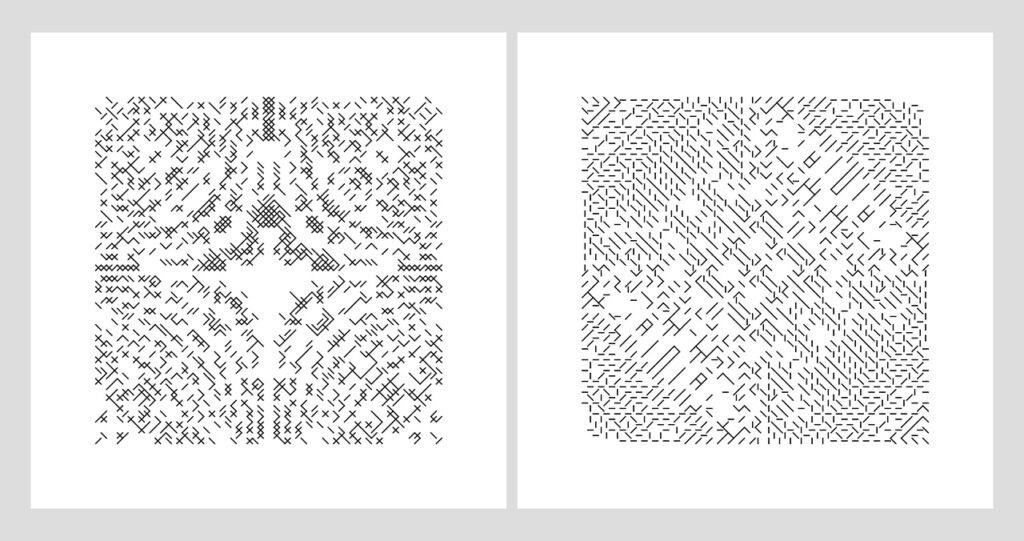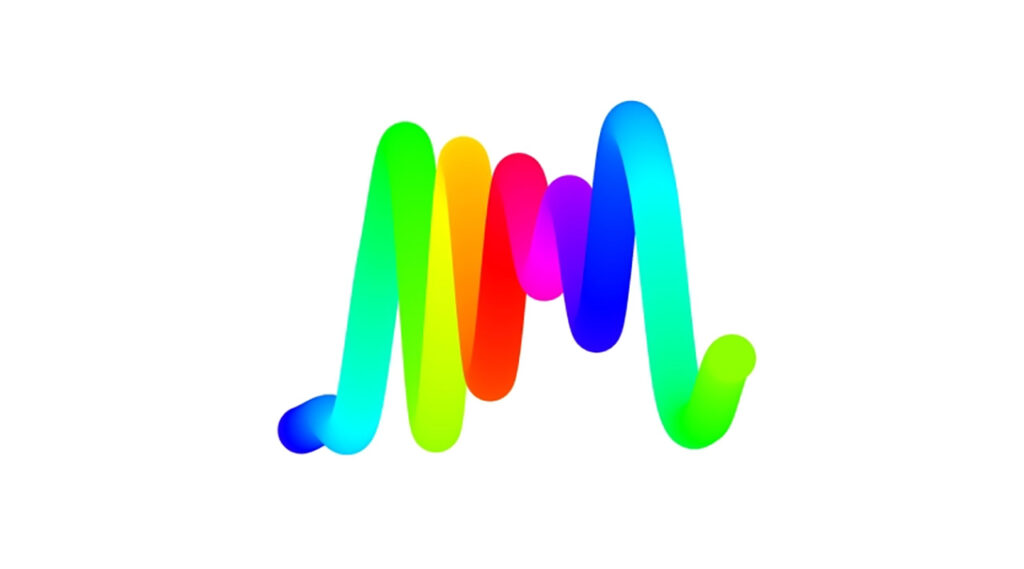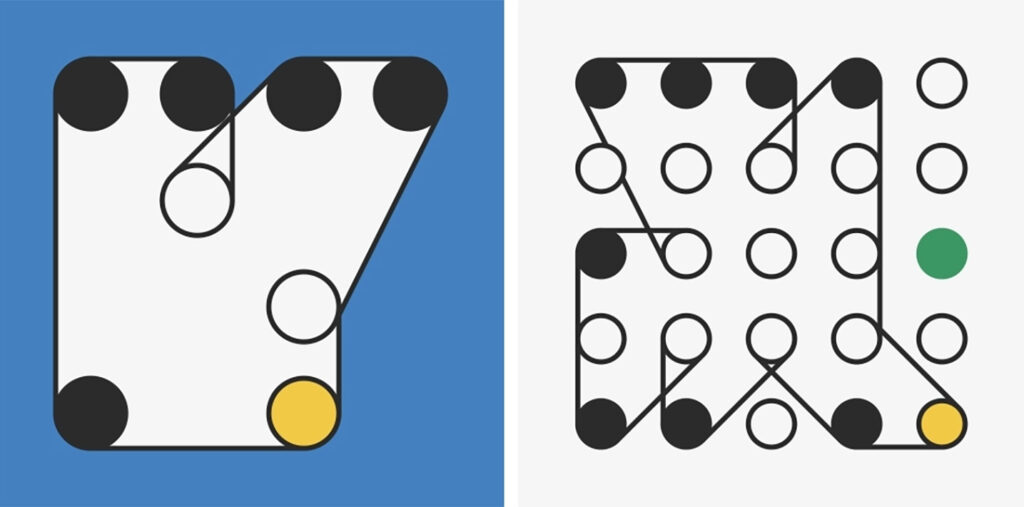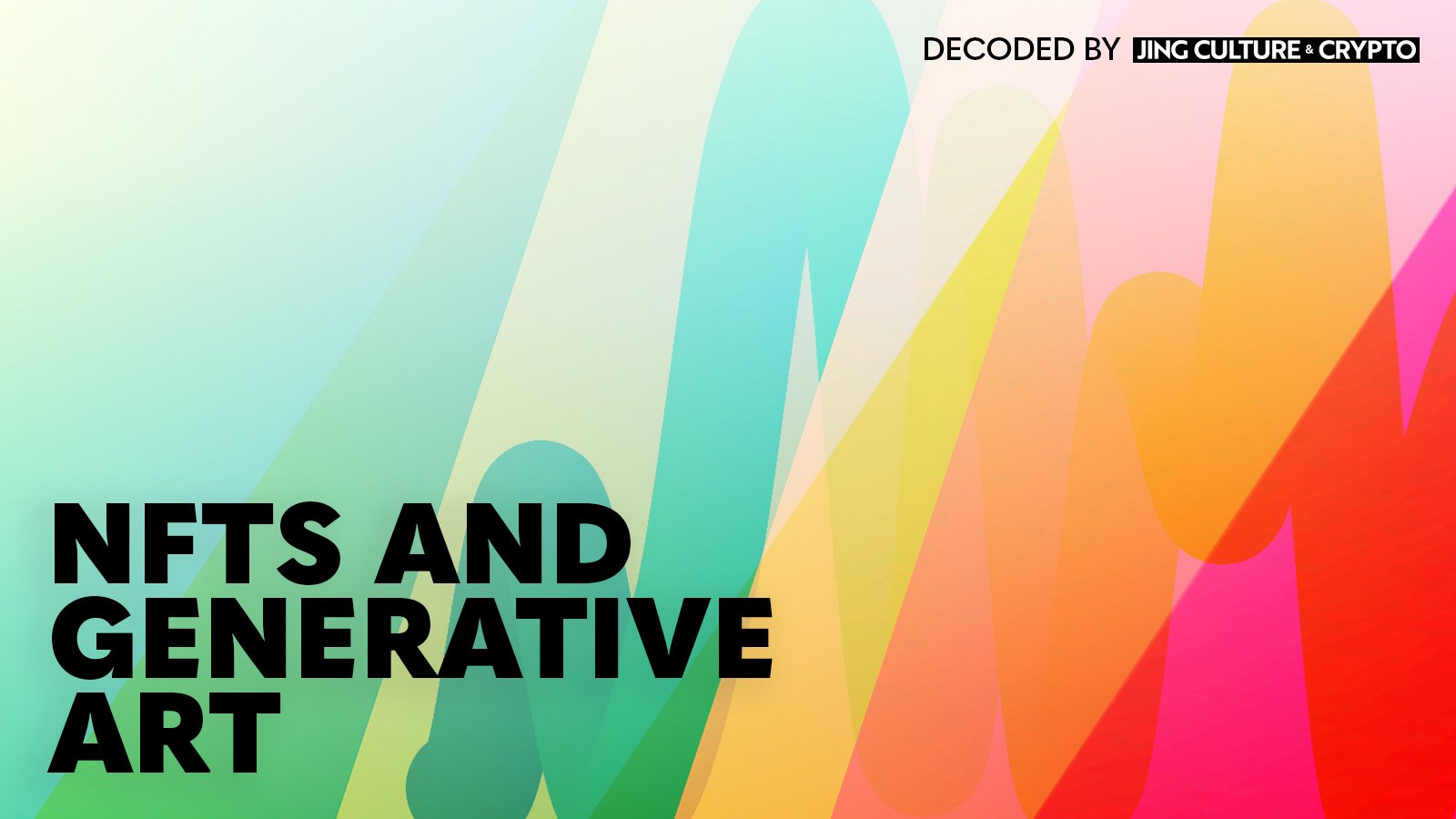If you’ve ever taken the time to scroll through the “Explore” tab on OpenSea, you’ll likely come across a series of collections that are unlike the more common PFP NFTs — generative art. This genre of NFT art showcases an algorithm-driven style that of late, has increasingly gained favor with both digital artists and digital art collectors. But what is generative art and why does it hold such immense value?
What is generative art?

Projects such as Larva Labs’ Autoglyphs, billed as the first on-chain generative art venture, have offered a view into the potential of generative art in the blockchain environment. Image: Autoglyphs #2 and #8 / Larva Labs
Generative art emerged in the 1960s with the likes of Georg Nees, Vera Molnár, and Charles Csuri — computer art pioneers who used early mechanistic technologies to generate autonomous art-making systems. Today, generative art begins with artists programming a code or algorithm to create a generation mechanism which produces a visual piece (or audio in some cases) that cannot be fully predicted until the process is concluded. In essence, they are designing a code which becomes the artist itself.
With the introduction of NFTs, this genre of art has taken on new heights in popularity and value, led by projects such as Larva Labs’ Autoglyphs, Kjetil Golid’s Archetypes, and Snowfro’s Chromie Squiggle, built on Art Blocks, which he founded. By residing on a blockchain (Ethereum in most cases), generative art receives a new layer of complexity known as living code where users are able to perceive a live image of the piece in its current residence on-chain. By minting a piece, the buyer is telling the code to generate an image which becomes an NFT.
What happens when generative art goes on-chain?

Chromie Squiggle by Snowfro, which was built on Art Blocks, has become a top billing generative art NFT project, with a current floor price of 10.95ETH ($12,301.07) on OpenSea. Image: Chromie Squiggle #9304 / OpenSea
Because blockchains are never ending (unless something catastrophic happens to the internet), these pieces of on-chain art become permanent and immutable. Thus, every time you view a generative piece on a web browser, you are looking at it in real time, not as a screen capture or image file — but the culmination of what the code has decided to produce.
For example, the live image of “Meridian #194” by Matt DesLauriers is not a PNG or a JPEG, nor is it hosted on IPFS. It is a string of code which has generated an image that is stored directly onto the Ethereum blockchain.
Another key feature of being on-chain is that the resolution of these images is infinitely scalable. Unlike JPEG and PNG files which can become distorted, the code for generative art has the capability of depicting the imagery at any size without degrading the quality of the art. Again, this is because the image is a line of code on the blockchain and not an ordinary picture file.
What is generative art’s market footprint?

Auction houses have helped spur the market for generative art NFTs, with Phillips due to host Ex-Machina in July, offering the works of Snowfro and Dmitri Cherniak (above). Image: Ringers #191 and #29 by Dimitri Cherniak / Phillips
While criticisms against NFTs have swarmed during the current crypto market dip, generative art projects have held their value. In fact, if you were to isolate generative art collections from the more common NFTs meant for flipping, you’ll find that their floor prices have remained incredibly stable.
One reason for this is because the market demand for generative art is not influenced by pump-and-dump marketing strategies. Instead, the communities involved with generative art are extremely interested in the technology used to create each image and hold a unique reverence for their imagery.
The space has also been held by high-profile platforms such as Art Blocks, which inked a partnership with Pace Verso last month. Auction houses, too, have helped spur the market for generative art NFTs, with Sotheby’s April sale, featuring the works by Molnár and Csuri as much as contemporary creators including Tyler Hobbs and IX Shells, fetching a total haul exceeding $2 million. Phillips is also due to host its own generative-art focused digital auction in July, where works by Snowfro and Dimitri Cherniak will be offered alongside yet-unseen works by Herbert W. Franke and Gottfried Jäger.
And how does the future look for generative art NFTs?
As the NFT market continues to evolve, so will generative art. The technical and artistic skills necessary for these projects to come to life are immense. Due to this difficulty level, the projects are not subject to the frequent rug-pull schemes that are commonly found among the general NFT ecosystems. Instead, many generative art projects rely on communities and active Discord servers to market their upcoming releases and to stir enthusiasm for the work.
Moreover, these collections are geared towards collectors looking to find art that speaks to them on a personal level. Unlike most NFTs, the tokens sitting at floor price are not the highest in demand. Buyers are looking through these collections with a discerning taste. This interest in quality over profits means that many of these projects are suited for longevity, providing safer investment options for buyers.



